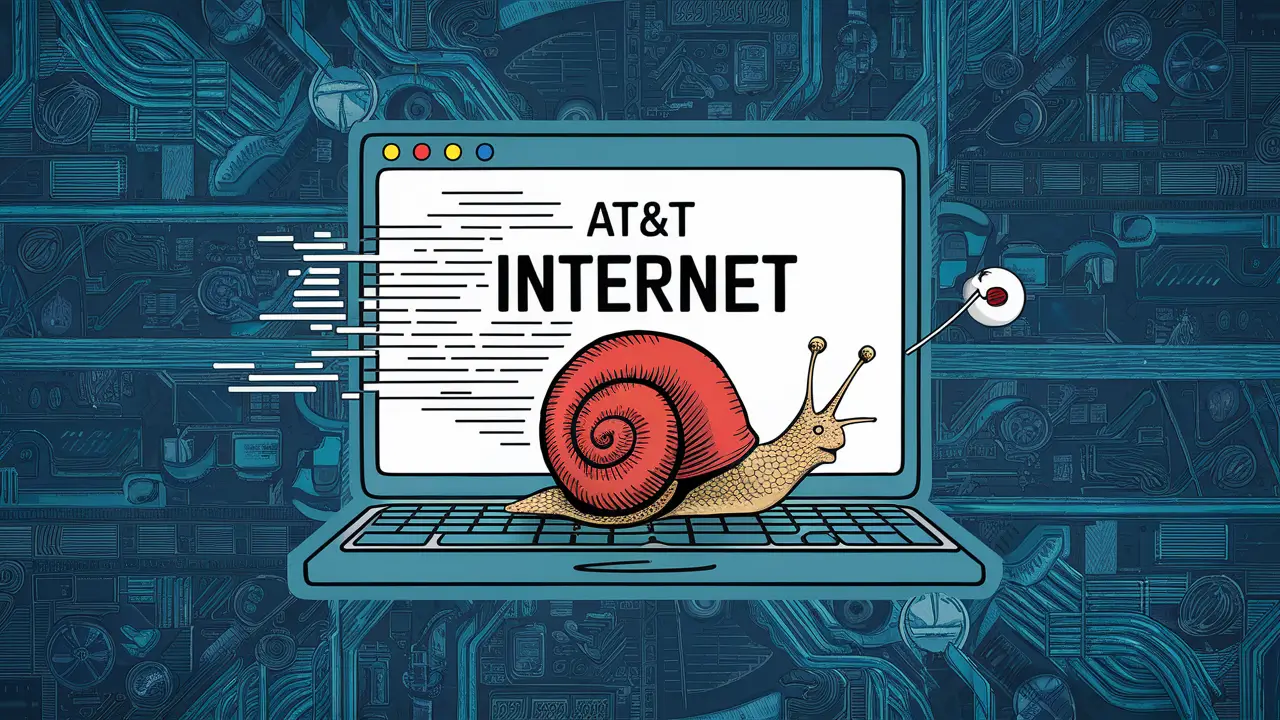Why is AT&T internet so slow?

AT&T Internet Slow: Here’s What You Need to Know
At present, AT&T is one of the most popular internet services which operates in the USA and has millions of users. However, many AT&T users often have complaints that the internet connection provided by the company is not fast enough as per the company’s promised speed. Below, are some of the reasons why access to the internet using AT&T could be very slow.
Network Congestion
Congestion is one of the most frequent causes of slow internet on AT&T’s network, which has led to it becoming a prevalent problem among internet users. When customers are too numerous and accessing the internet at the same instance, it becomes congested in that neighborhood or area. This is made worse by the fact that in urban centers where there are many users, there are also many internet subscribers and so the competition for bandwidth is extremely high. It also shows that the higher number of people active online at the same time corresponds to the slower speed. Hourly traffic distribution reveals that usage in the peak hours of 5-10 pm has the biggest impact on congestion and thus slower speeds.
Infrastructure Limitations
Similar to the rest of the major ISPs, AT&T utilizes cables, fiber optic lines, wireless towers, and networking equipment to provide home internet services. If in a particular region, the infrastructure was not upgraded sufficiently or capacity was not developed enough to meet the growing demand, the speeds will be lower during periods of high load. This problem is most acute in rural regions where the DSL lines are older and have not been replaced in many years. J The larger the distance from the customer base and the main servers, the more significant the speed drop.
Overselling Bandwidth
A few opponents believe that facing the goal of generating the highest possible profits and subscriptions, AT&T intentionally overstates bandwidth in some regions. Even the advertised maximum service speeds may not be achievable since the company may not have enough bandwidth to deliver the top speeds to all the subscribers simultaneously. Overselling is an inevitable idea since speeds are certain to drag during rush hour when everyone is streaming videos or playing games online. Even though it is far from ethical, overselling enables AT&T to market internet connections at the highest possible price in that region, regardless of the amount of overall capacity available.
With these specific low-tier packages, the download speeds are limited as well.
The cheapest internet packages at AT&T come with a severe loss of speed for its users. For instance, the initial tier of the AT&T Internet plan is only between 10-25 Mbps. As you can see, at those speeds, simple web surfing and other low bandwidth activities may take a reasonable amount of time while activities such as downloading big files or streaming high-quality video are extremely slow. Adding to the disappointment, such low tiers also include a limitation on the total amount of data that a user can use per month, usually 150GB. It is possible to exhaust the allowed data or minutes, which causes a speed reduction or attracts additional charges.
There are problems of interferences on the Wi-Fi networks and sometimes the strength of the signals is very low.
This is also affected by what happens beyond the modem level as noted earlier in the paper. Some of the problems may be arising from the customer’s Wi-Fi networks and routers where it is hard for AT&T to intervene. Most people complain of poor signals from the router, interference by other electronics, or thick walls that hinder signals from getting through, competition from many devices that seek the connection simultaneously can affect Wi-Fi significantly. Although AT&T may provide the modem itself with high speed regularly, the Wi-Fi slows everything down to a snail crawl very often unless users replace their equipment.
Lack of competition means that no one is putting pressure on the other and therefore there is always room for complacency.
Another group of analysts has indicated that in places where AT&T has low competition, the firm may have little financial incentive to quickly build or enhance infrastructure. Even though AT&T lacks exclusive growth opportunities that Google has, they do not have the problem of customers jumping ship from them to cable competitors. This is because there is no pressure from competitors to meet the demand through capability expansion on a massive scale when the current business as usual is lucrative in their monopolistic domains. Customers then experience the pain of long-term speed deficits through delayed deliveries.
Finally, while AT&T does provide a real high-speed connection to millions, it does so two decades after it promised it would. However, between over-hyped bandwidth, saturated networks, obsolete cables, Wi-Fi throttling, and complacent competitiveness, the lack of adequate internet speed holds back many users as a negative side. To get faster speeds, one might have to upgrade to fiber optic packages or change service providers which may be the only solution for some hard-hit areas. In general, it’s recommended to evaluate the AT&T internet service according to your geographical location and strict use of the internet.
Upgrade to faster, more reliable AT&T Fiber Internet today! Call us at +1 844-905-5002 and get connected with speeds that keep you ahead.





